The Pinnacle of the Panamera! Test Drive of the Panamera Turbo S E-Hybrid
公開日:2021.11.16
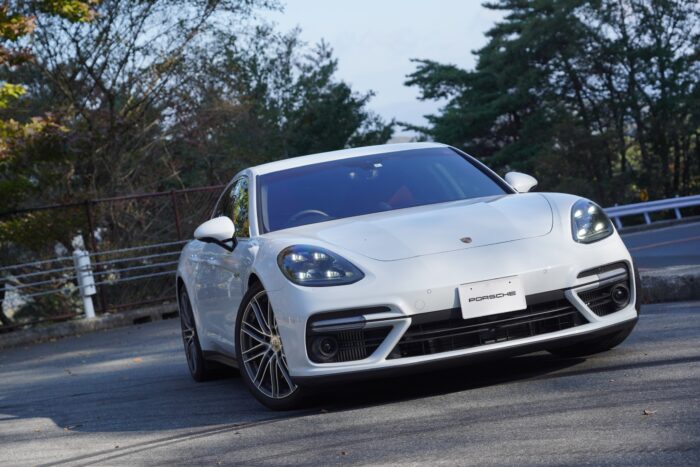
This blog originally started because of my wife’s love for the Panamera.
In our household, we have driven the 970 late-model Panamera Edition and the 971 early-model Panamera Turbo, and although we now have a Cayenne instead, the Panamera remains a beloved Porsche.
This time, I happened to borrow a 971 early-model Panamera Turbo S E-Hybrid as a loaner, so I’d like to share my review.
Panamera Turbo S E-Hybrid
Let me start with the conclusion: this car is an absolute masterpiece.
Of course, it’s a car that costs over 30 million yen at the starting price, so that’s to be expected, but in terms of feel and driving performance, it’s on a completely different level compared to any sports sedan in the same class I’ve experienced—in fact, it outshines even more expensive sports sedans by a wide margin.
The refinement in driving performance, especially in the drivetrain and suspension, shows a level of dedication and seriousness that’s unmatched. To put it bluntly, other cars feel like toys in comparison.
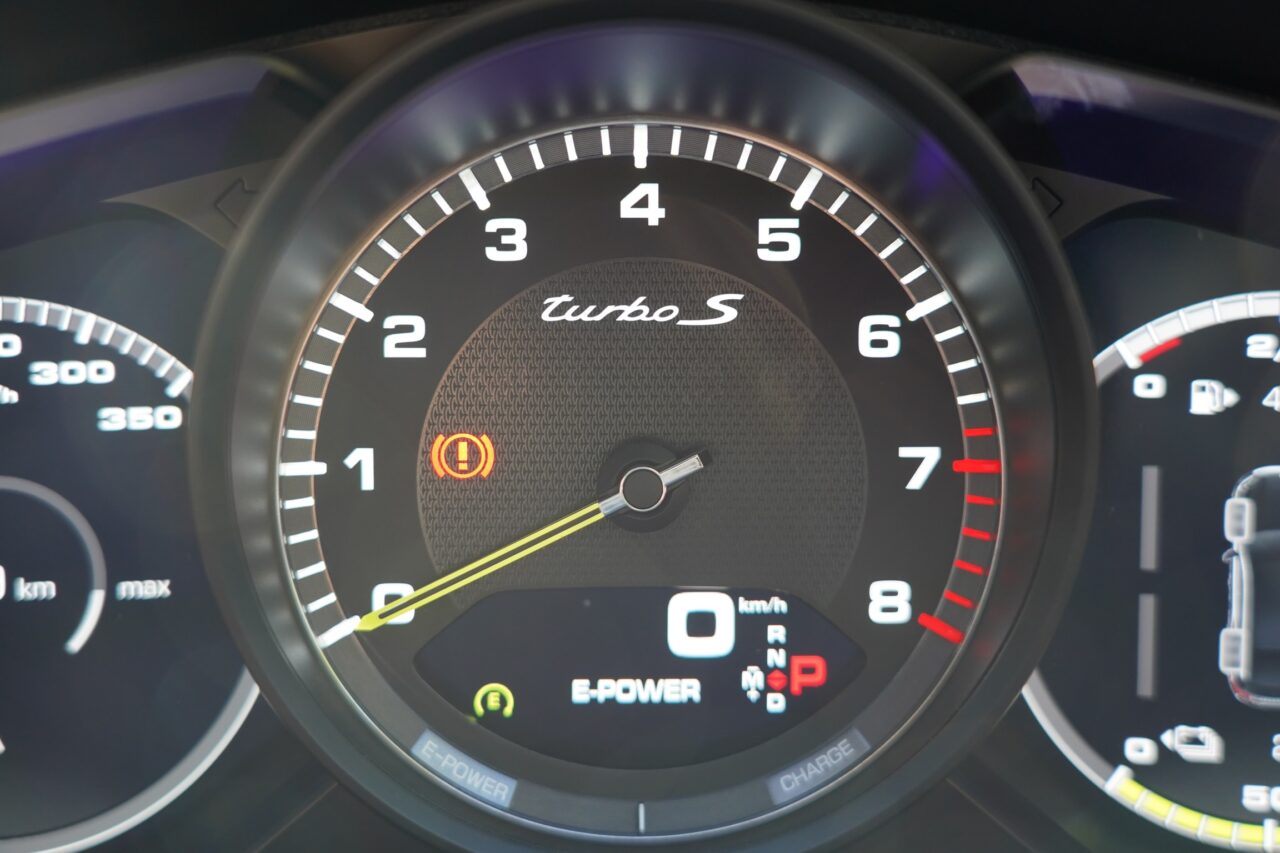
This Panamera Turbo S E-Hybrid builds on the Panamera Turbo I previously owned by adding a hybrid system. The 4.0-liter V8 twin-turbo produces 550 ps, plus an additional 136 ps from the electric motor, bringing the total system output to 680 ps and torque to 850 Nm (86.7 kgm).
When you get in and turn the starter switch, it starts in the default E-Power mode, so the engine doesn’t fire up immediately. Compared to the Cayenne E-Hybrid, the faint inverter noise at a stop is a bit more noticeable, but it’s not a problem once you get used to it.
After confirming the “Ready” indicator on the meter, gently press the accelerator.
The smooth initial response is unique to motor-driven power. The transmission isn’t the tiptronic (torque converter AT) found in our Cayenne E-Hybrid, but the Panamera uses a PDK (dual-clutch AT), so it feels more direct.
Especially from second gear onward, the acceleration is clearly powerful, and you might even think, “Wow!” as it eagerly picks up speed. Switching from the Cayenne hybrid, it takes a little getting used to. Even with the same motor, the Panamera feels stronger overall than the Cayenne.
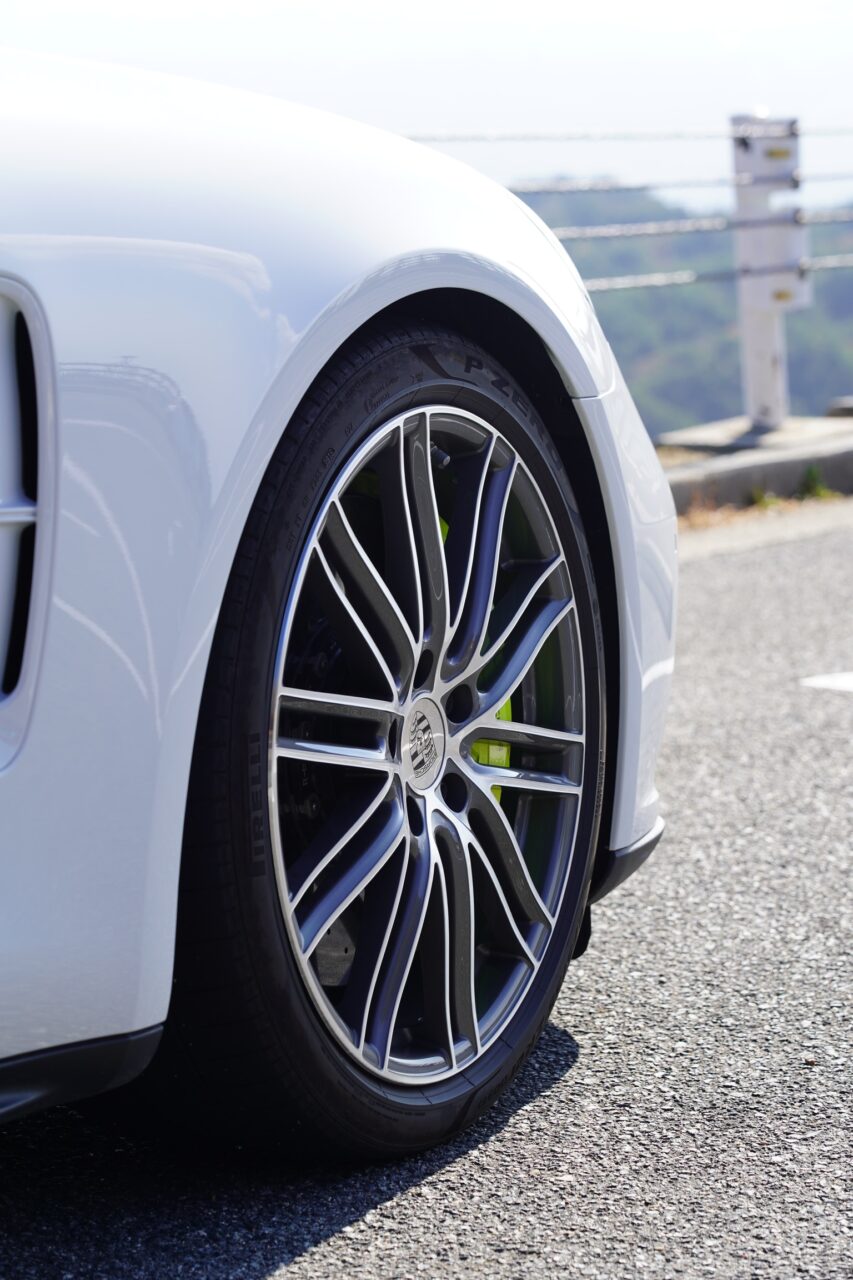
The highlight is the suspension feel. Simply saying “comfortable ride” doesn’t do it justice. Among all the Panameras and Cayennes I’ve driven, this has the best ride quality by far.
If we talk only about smoothness or softness, the current Cayenne’s air suspension might be better, but the Panamera combines a strong sense of tire contact and suspension rigidity with lightness and smoothness.
This is exactly the ride quality you’d expect from a Panamera.
It’s sporty yet ultra-comfortable. The Panamera’s concept of combining these seemingly opposing qualities is perfectly reflected in the suspension setup. The Panamera Turbo leans more toward sportiness, and the GTS even more so, but the Turbo S adds a higher level of refined comfort to the Turbo’s suspension.
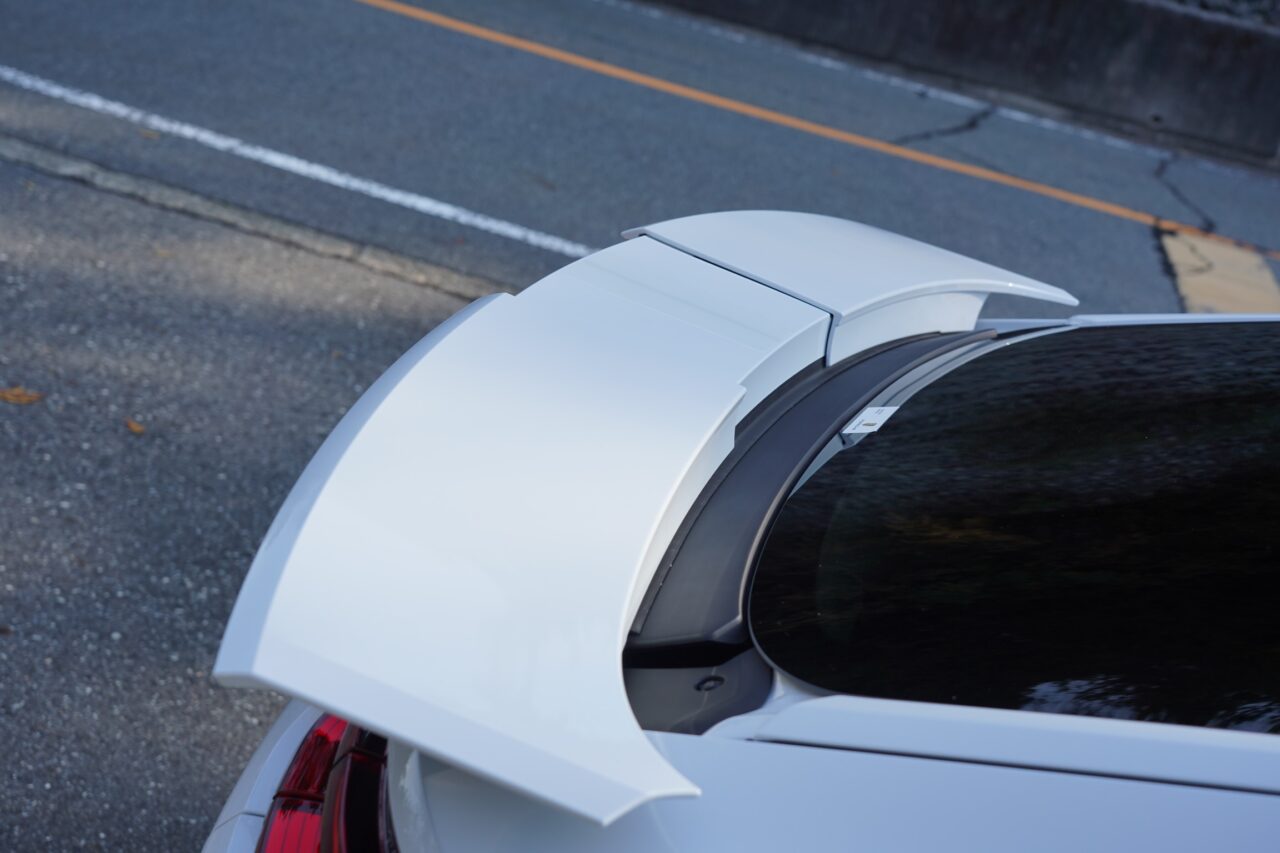
The wide rear wing exclusive to Turbo and GTS
One reason for this is the standard PCCB and PDCC on the Turbo S. The ceramic composite brakes, much lighter than cast iron brakes, pair excellently with the massive 21-inch Turbo wheels. Even in situations where the cast iron brakes on the Turbo make the suspension feel heavy, the Turbo S’s tires smoothly absorb bumps with a light, quick motion.
When going over bumps, you only hear a soft “ton, tan” sound.
Comparing to the Taycan’s air suspension plus PDCC, the Taycan feels flatter, but the Panamera better absorbs road roughness, while the Taycan’s suspension feels slightly firmer. (This may also depend on road and wheel choices.)
Impressions on Winding Roads
The cornering is truly impressive. In Sport Plus mode, the ride height lowers significantly and the suspension stiffens to the max. The official vehicle weight is 2360 kg, but it doesn’t feel heavy at all. In fact, it feels as light and nimble as the Panamera Turbo I used to drive.
Thanks to the magical roll control, body roll is clearly minimal. I’ve said many times on this blog that the effect of PDCC is tremendous.
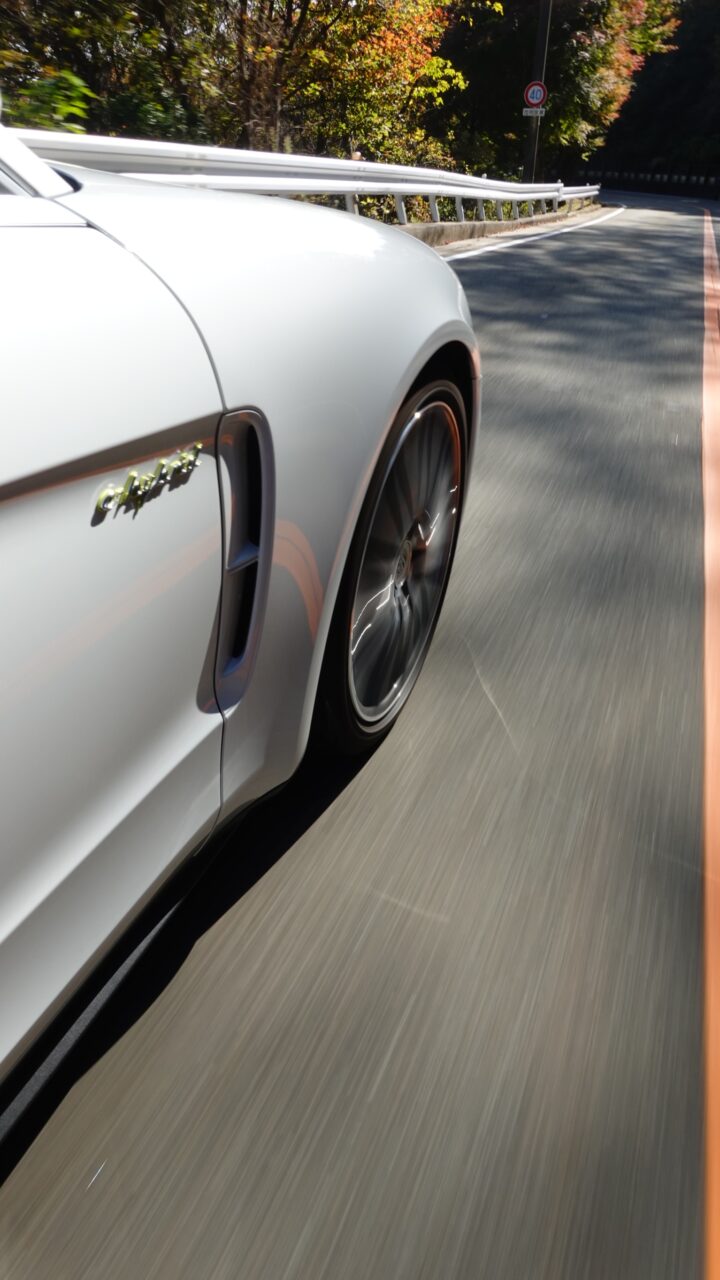
This feature is especially recommended for drivers who lack confidence. Even if your cornering line isn’t perfect, the car minimizes roll as if a highly skilled driver took the shortest line.

The cornering posture, steering precision, and road feedback are all so excellent that it’s hard to believe this is a large sports sedan. It feels like the car shrinks in size, and you joyfully carve through corners.
The 680 ps power is hammered into the road, and the Panamera distributes torque to all four wheels, pushing forward relentlessly. While the acceleration is undeniably powerful, the weight makes the Turbo feel more aggressively quick in comparison.
Regarding the brakes, the regenerative braking feels somewhat weak.
The Cayenne E-Hybrid’s regenerative brake is strong from the start, but the Panamera’s initial regen is gentle, with the physical brakes providing strong stopping power at the end. Since the physical brakes are PCCB, they naturally work well, but the difference between PCCB and regenerative braking feels quite noticeable, which was a bit odd.
Engine + Motor Feel
The key difference from the Turbo isn’t power but engine feel. The Turbo’s V8, like modern turbo engines, has minimal turbo lag, but since it’s a high-performance engine, you can sometimes feel a slight torque dip when you push hard.
The E-Hybrid motor skillfully fills in that torque gap. For example, during overtaking at 50 km/h in town, the acceleration perfectly matches the accelerator input with zero turbo lag. It’s truly delightful and reminiscent of the Taycan’s feel. The Panamera adds the V8 engine sound to this, making it even more enjoyable.
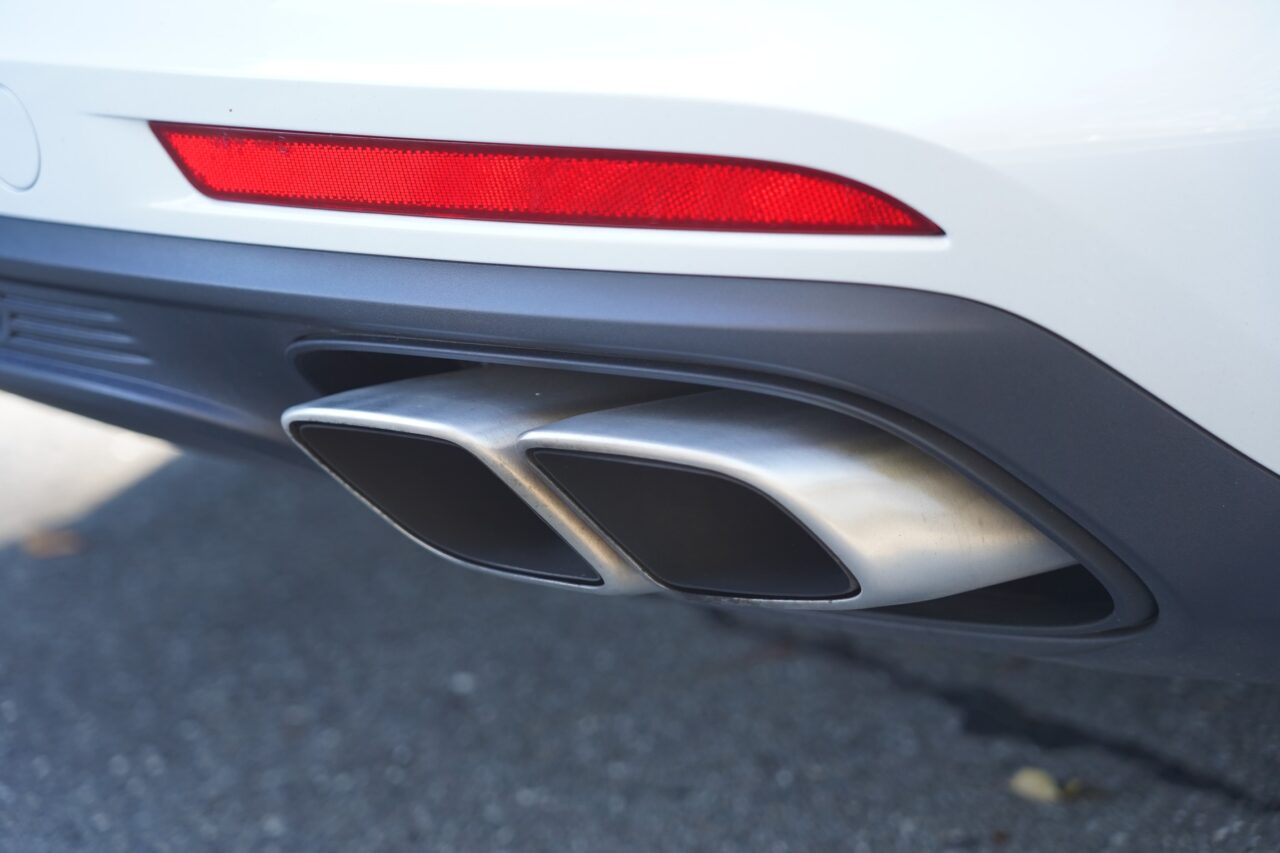
This Turbo S wasn’t equipped with the sports exhaust, but compared to our Turbo with sports exhaust, the volume difference is significant.
It makes a respectable sound when revved, but there’s almost no bubbling noise, and compared to the explosive roar of the Turbo with sports exhaust, it’s much quieter.
Highway Impressions
On the highway, it truly feels like a king. The overwhelming power, stability, straight-line steadiness, and the confidence that it can handle any corner come together perfectly.
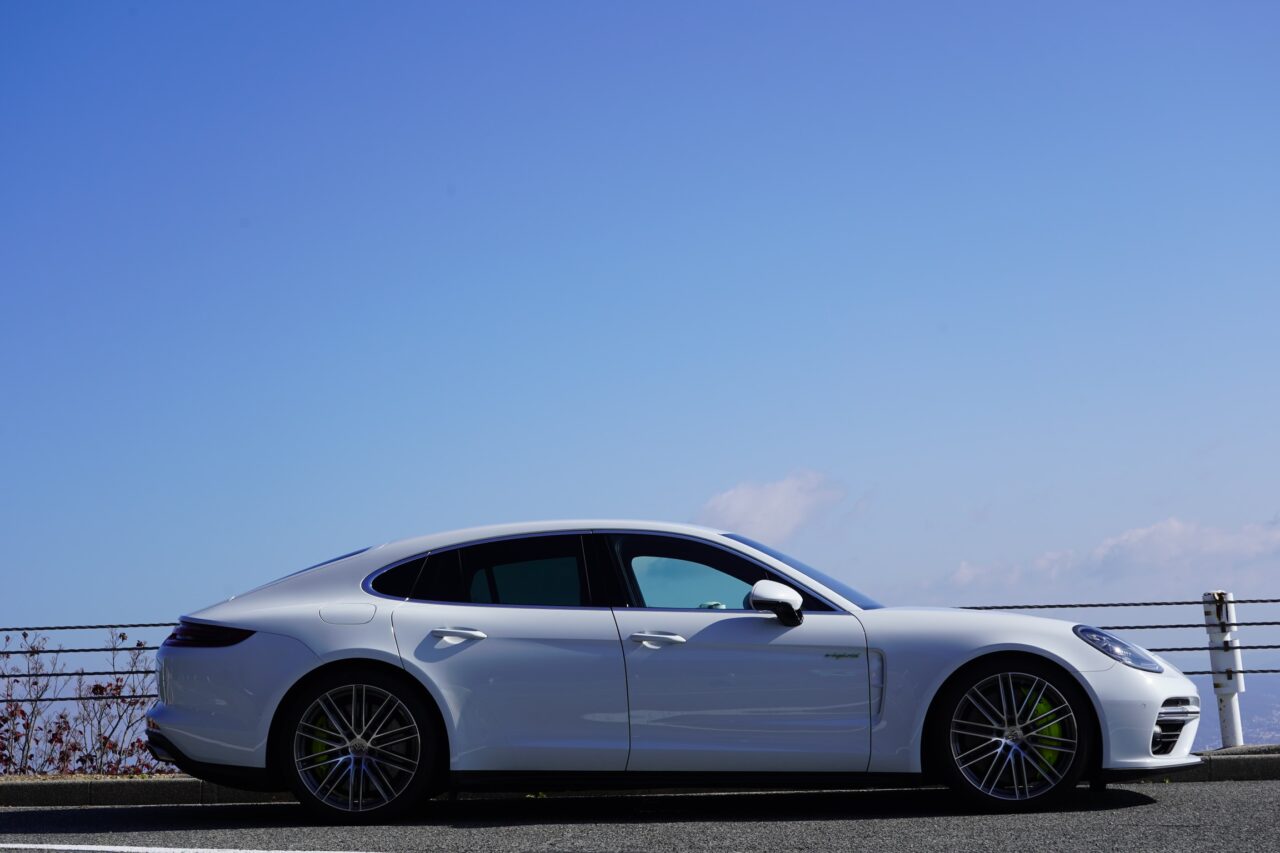
A long-distance tour in this car would surely be extremely comfortable. The only downside is that Japan’s highways are too easy for the Panamera. I think the car’s abilities can really be unleashed only on the German Autobahn.
My Wife’s Impressions
After returning home, my wife took the Panamera keys and went out for a drive. Soon after, I received a message on my phone:
‘Within 2 seconds of starting, it’s already amazing!’
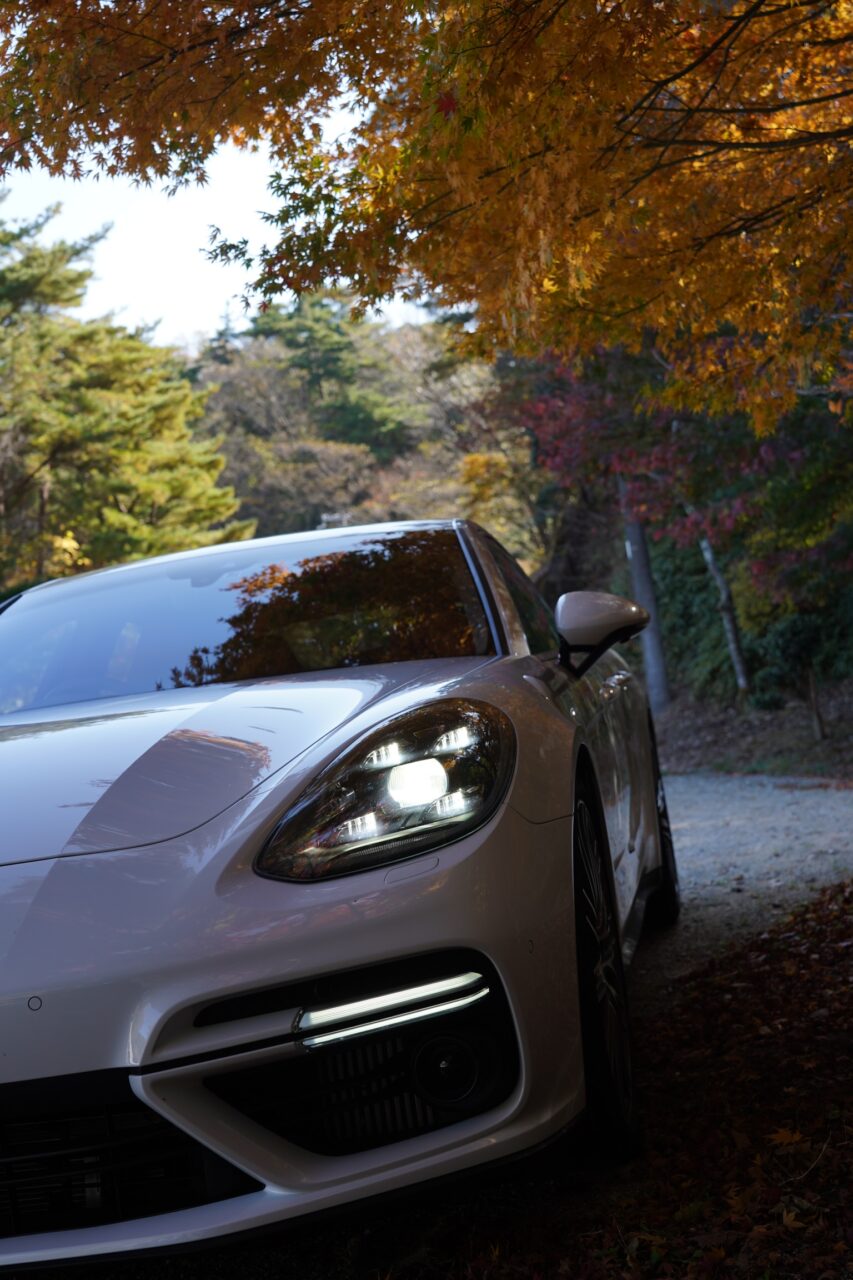
That’s how different the Turbo S really is. I’ve written before about how Porsche’s “Turbo” grade stands apart from others, but the top-tier “Turbo S” is not just a higher-performance version.
You can clearly feel the distinct tuning and character.
After reluctantly returning the car, my wife and I joked, “I wonder if they’d sell that car to us?” and “Maybe we could trade it for our Cayenne (laughs).”

If only the Panamera’s rear seats were a bit roomier and could comfortably fit three kids, it would have been a close call.
That’s how exceptional this Panamera was.
このブログが気に入ったらフォローしてね!


Comment ( 0 )
Trackbacks are closed.
No comments yet.